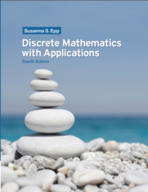Just as the difference rule gives rise to a formula for
Chapter 9, Problem 18E(choose chapter or problem)
Just as the difference rule gives rise to a formula for the probability of the complement of an event, so the addition and inclusion/exclusion rules give rise to formulas for the probability of the union of mutually disjoint events and for a general union of (not necessarily mutually exclusive) events.a. Prove that for mutually disjoint events A and B,P(A ? B) = P(A) + P(B).________________b. Prove that for any events A and B.P(A ? B) = P(A) + P(B) – P(A ? B).
Unfortunately, we don't have that question answered yet. But you can get it answered in just 5 hours by Logging in or Becoming a subscriber.
Becoming a subscriber
Or look for another answer
